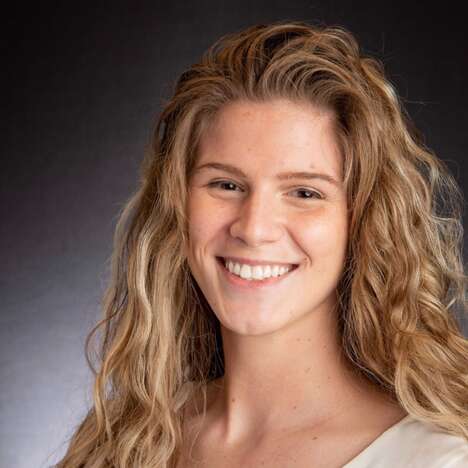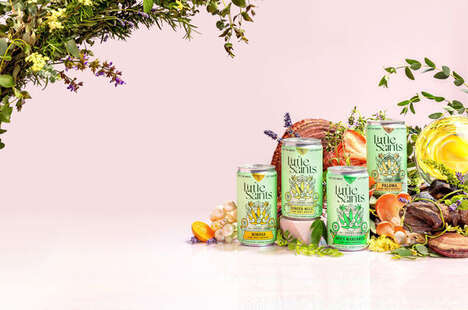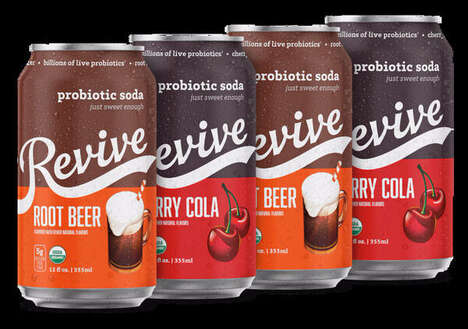Human-Centric Innovation
An Interview with Gabrielle Walker, R&D Scientist, PepsiCo
 As an R&D Scientist at PepsiCo, Gabrielle Walker drives early-stage innovation within and relies on design thinking to lead the way. Her experience spans benchtop and conceptual work, along with horizon 3, and beyond deliverables.
As an R&D Scientist at PepsiCo, Gabrielle Walker drives early-stage innovation within and relies on design thinking to lead the way. Her experience spans benchtop and conceptual work, along with horizon 3, and beyond deliverables.1. What does innovation mean to you?
Innovation is perhaps one of the most multi-faceted buzz words; I think of it in the same way that I think of the term “trend”—always with hesitation, questioning, and curiosity. To me, innovation can be incremental, or it can be disruptive. A Trend can be a macro change, or it could just be a fad. To be able to discern the difference is a skill any business must be apt in, although I don’t always see that in practice—a ketchup company might spend 18 months creating a new sriracha dip because there was a trending spike in consumer conversation. In the 18 months since the onset of said “trend,” consumers have moved on to gochujang. While this incremental innovation will gain some traction and sales with their consumer, it is not going to be a disruptive innovation, just as the sriracha “trend” is simply a fad, a short-lived example of FOMO in real life.
While both types of innovation hold the same title, just as both types of trend hold the title, only one takes responsive action, creating in reply to an existing need or want. The latter definition of each, a disruption and a macro change, are ones that take critical foresiting, creating in anticipation for what will come next, so that we already have the blueprint for the answer when the mainstream consumer becomes ready to embrace it. True innovation means answering a currently unknown need with a currently unknown solution by use of clues and macro forces of change to construct potential futures.
2. How do you and your team generate new ideas?
Generating new ideas in my makeshift team does take some coaxing, as the majority come from hard science backgrounds. I take the approach of exercising psychologically safe exploration – simply put, our workspace is free and safe and open to explore things that might influence our work as a company, knowing that it may be a long shot, horizon 3-thinking, or that it may not land at all.
Establishing that psychologically safe environment is crucial to the start of idea generation. From there, ultimately, I try to employ 1 tool (called Hat Trick), and 2 questions (“how does this relate?”, “how might we?”). The tool uses random stimuli to spark thoughts that might create a connection between 2 industries, connect a tool with an un-specified purpose, establish a new perspective, etc. In an ideation session, we might actually put examples of occasions in one hat, examples of products in another, and examples of times of the day in a third, for example. Each person takes a turn at choosing one from each hat and are then tasked to create a product that connects all three.
This easily leads to some pretty outrageous ideas, but fortunately, before we started ideating we were grounded in the trends (micro,macro, disruptive). So, we ask “how does this relate” to tie our random combination to a clue, a theme, a change we see in our specified consumer, category or demand space. I like to think of this as a personalization step (also a Trend Hunter Megatrend we commonly see occur).
And last, we ask “how might we?”—as the company that we are, with the portfolio we support and the technology we utilize, manifest this idea into a real product on multiple horizons (H1 what we can do now, H2 what we’re close to being able to do, and H3 something far from today but reasonably in our future).
3. Can you share 1-3 unique innovation tactics your team relies on?
Our star tactic subsides in a new tool that has been my baby for a couple years now within our Beverages R&D function: The Trend Collective. Trend Co is a movement built to educate our internal culture regarding new trends and innovations (fads, macro forces of change, incremental and disruptive) to better understand the difference. The goal is with increased knowledge and increased skill, and we might better foresee where our consumer and the many versions of consumers are headed, and ultimately how it will impact our work as scientists creating new products.
This tool encompasses several topics/pillars including future ingredients, competitive landscapes, and culinary immersions—that last word, “immersion” is really the tactic, though. In every scenario/topic/activity, we rely on is immersing ourselves in it all. Fortunately, as a food and beverage company, this usually involves good food and good drinks! We may take the entire competitive landscape and taste, categorize, map and study each product, we might digest social media content of our target consumer (e.g. watch Tik Toks) and identify the underlying consumer needs based on internal framework, or actually go out and eat at a culturally authentic restaurant and/or order a range of delivery from the relevant fast-food chains. It counts as an immersion if it involves doing anything more than reading a report or listening to a webinar and it’s a very hands-on approach!
In partnership with the Trend Collective immersions, we try to carve out time in our work days for creativity. During and after a cultural/culinary immersion, where we’re actually touring physical shops, speaking with owners, and interacting with the consumers, we ask for everyone to bank their ideas in the Idea Bank. This is actually a physical backpack that the leader wears with sticky notes and pens at the ready to capture as many ideas as possible. After, ideas are reviewed and amongst the team, a favorite or two are chosen to move forward into a Minimal Viable Product, regardless if there is a clear, chartered avenue to which it might align. An individual from the team, usually a young product developer, is chosen to bring this sticky note idea to life in any way possible, using store bought ingredients, benchtop capabilities, or even proxies (we all made play-doh cookies as kids, and sometimes that level of fidelity is perfect for this exercise).
4. Do you have any specific rituals to reset creativity?
When we’re in the middle of a workshop or ideation, we like to reset in a way that’s pertinent to the topic on which we are working. For example, working on a sports drink landscape, we decided to get into the gym when we were hitting a wall. While we didn’t require individuals to do pull ups or crunches, we did ask them to race on those yoga balls with handles, the ones we played with as kids. In the 2nd round, we held a water bottle flipping contest (you toss up a water bottle to spin and try to land it upright). In another case (and in Covid-times), individuals working on the project were sent a DIY cocktail kit to ground themselves in mixology culture, get the chance to make something with their own hands, and to excite their senses with new tastes and textures. In both examples, the goal was to, at some capacity, engage multiple senses, and get them to do something they definitely aren’t doing during a regular working day. To get out of our routine rivers of thinking, we must physically, mentally, emotionally move out of our normality.
Personally, my favorite is to put on headphones, get up, and make up a dance to a blaring, exciting, over-the-top song. I get every part of my body moving, I sing even though I’m terrible, I exhibit the emotions of the song even if it’s not what I’m currently feeling because we know smiling even when you’re not happy will trick your brain into thinking you are. The more effective dance/songs are ones that get me to move muscles I don’t typically (facial muscles included).
5. How do you identify trends? What resources do you use to spot trends and consumer insights?
We do utilize several tools to stay up on trends and consumer insights, including the Trend Hunter application. In addition, we have a few subscription services that also cover cross-industries and provide detailed information on entire movements surrounding a trend. The Trend Collective itself also provides a resource, as we put on Culinary Immersions/Trend Treks in New York City quarterly. These require some actual groundwork to visit popular parts of town, find unique dives on the fringe, and talking to niche store owners or bartenders. Anytime I go to a new part of town or any town when traveling, (personal or professional), I will go through every aisle at every grocery and convenience store I can.
We are concurrently working on Human Centricity at an organizational level, and some of those skills are transferable when trying to observe as much as possible without making assumptions, rather continuously looking for more clues until you can build a picture in your mind. We then may use sources such as Mintel, IRI, Nielsen and more to confirm or further our understanding of the consumer or current early market.
Additionally, I see social media is the simplest, free source of spotting fads, you just need someone who can interpret and paint the broader picture that’s forming through each small piece of the puzzle. In any ideation workshop for a particular project, I always do an Instagram, Twitter and Tik Tok scrub for relative examples of the consumer, the actions, the content that is trending just to ground and spark thoughts. I try to find the bridges back to macro changes, next, to understand it’s origin/connection to those unchanging human needs.
6. Has there ever been an instance where another industry has inspired you/your company?
I think in the beverage industry, we typically think to the perfume industry as a major influence to understand the use of botanicals and emotions, especially as the energy/mood management category is so multi-faceted and booming. However, I personally get the most inspiration from another, less apples-to-apples industry: psychology.
The ideas of “good friction,” FOMO, and emotional safety all live in the realm of psychology, which makes sense since we’re trying to solve for human needs, whether physical, mental or emotional. This is, however, more of a mindset, a way to approach things, but I can think of one instance where psychology directly inspired action: the “Betty Crocker Egg Effect” and Sodastream. The legend goes that the Betty Crocker cake mixes in which you didn’t have to add anything but water were once very low in sales, especially coming out of an era where everything was homemade from scratch. They reformulated slightly to actually ADD a step for the consumer, forcing them to supply an egg when mixing the batter. Sales sky-rocketed. Why? Because the consumer (at the time, a stereotypical housewife), felt like they put some real ‘love’ into making the cake, just like a mom would when baking from scratch, but it still allowed
them the right amount of ease to make it “worth it”.
Sodastream, a PepsiCo branded piece of equipment, borrows from this “effect,” alongside the trend that exists cross-industries: personalization. Sodastream is a solution that allows the consumer to create their own carbonated beverage, and do so in a way personalized to them (do you like a little carbonation or a lot?). It’s an “acceptable” amount of work for the consumer who wants to feel like they get to make something for themselves, and our line of flavor drops to go along with the gadget allow for free mixing of flavors and dosage.
Now, just as Betty Crocker and the rest of the industry latched on to the egg effect, using it in new products across the category, we are beginning to dabble in how we can utilize the Sodastream unit to carbonate anything, not only water.
7. What makes an innovative company culture? How do you create a culture of innovation?
When it comes to it, mindset is what makes an innovative company culture. To create that mindset to grow an innovation company culture, you have to practice innovation/creativity/exploration in everyday roles. While not every role in a company can be to look at far out, fuzzy front-end pieces, an innovative mindset can be applied to any position, even if it’s one that feels routine.
In R&D Beverages, my colleague and I started by launching an ideation workshop for the masses, led by a former Head of Innovation at Disney. Rather than get groups together to “ideate” concepts for next year’s brand launches (with no tools or strategies to do so), we took 2 days to practice how to best go about ideating. Post-workshop, a Community of Practice was established to regularly join participants in a space that reinforced all that we had learned and allow room to share use cases in various projects, strengthening the attitude and mindset that this powerful approach could be used to make change in our formerly generic and platformable methods.
While the Community was dissolved after internal business restructuring and a large portion of participants left the company, The Trend Collective came to fruition to take a different approach, one focused on understanding the trends, where they came from, and to give a glimpse at how others have gone about innovation. It is difficult to measure something like mindset, in turn, further skewing how to size up a company’s culture for innovation. We create our culture by providing avenues for individuals to get curious. We push product developers to think larger by prompting them with examples of where others have done what we thought was impossible. We bring our computer-based employees into the lab, into the kitchen, and let them play, think, create. Foster the mindset, and the culture will follow.
8. Looking to the future, how will you/your company continue to be a leader in innovation?
Fitting perfectly, I’m excited to share that a re-branded “Curiosity Council” (name TBD) will begin for PepsiCo Beverages R&D starting Q1 2024, a group dedicated to evoking curiosity amongst employees, and teaching them how to harness it as a skill. Our WIP slogan is that “Ideas come from curiosity”, a quote from Walt Disney. Still leaning heavily into the belief that a culture of innovation is driven by mindset, we will continue to foster curiosity and further refine the neural networks that help bring someone out of their routine “rivers of thinking”.
Outside of culture, we are investing heavily into new ways to identify trends and innovations earlier to remain a leader rather than a follower. Multiple parts of the business are looking towards AI, learning the capacities and limitations, and preparing for a future in which we incorporate such tools into our daily work routines. Side by side with this work is our development of our foresiting skills. No AI will truly be able to “predict the future” for us, but we can work now to create solutions for multiple futures, preparing us to have an answer for whatever possibility transpires.
References: pepsico


